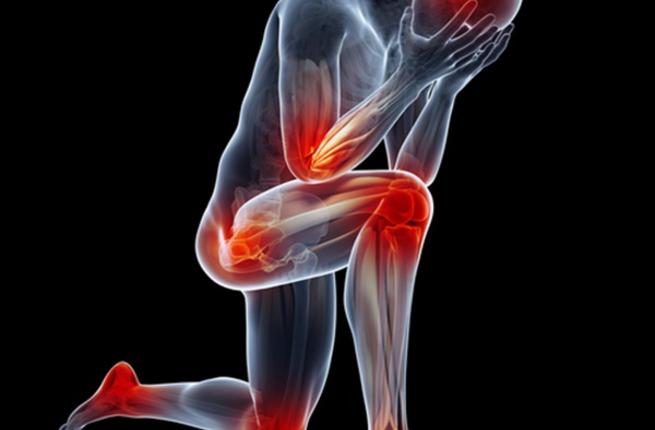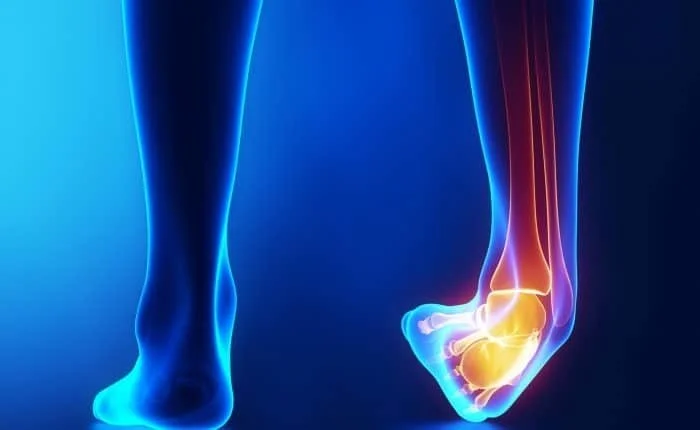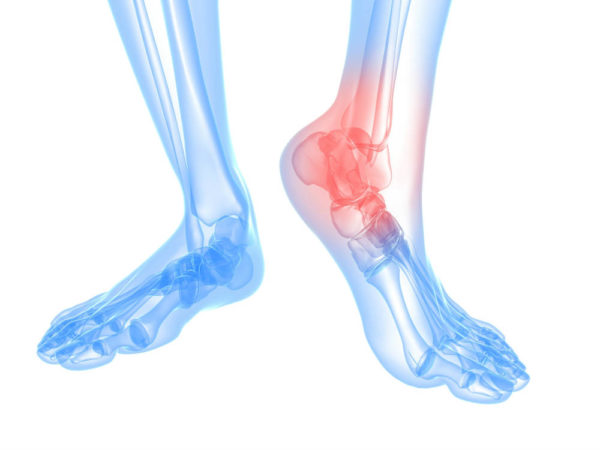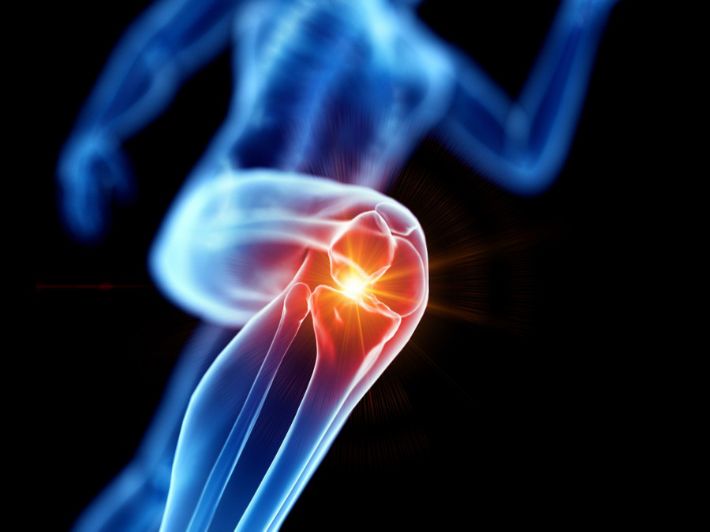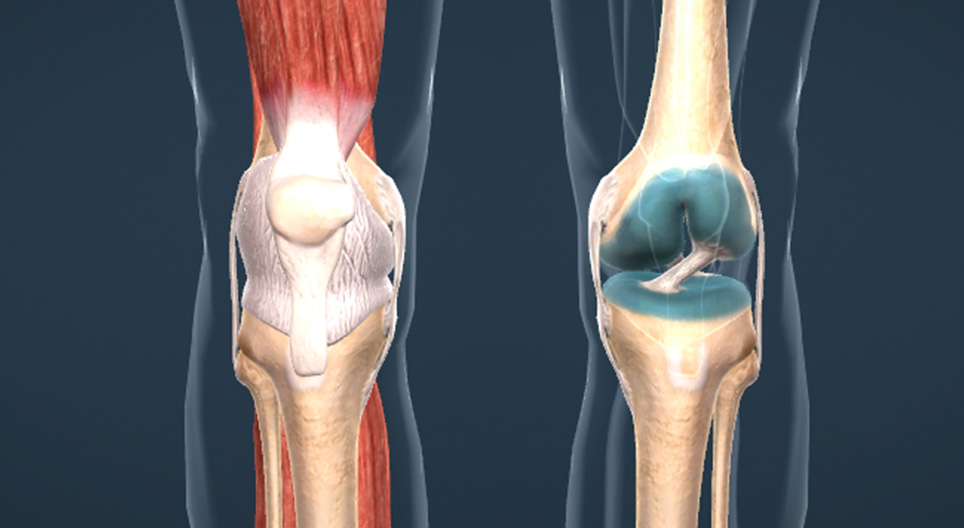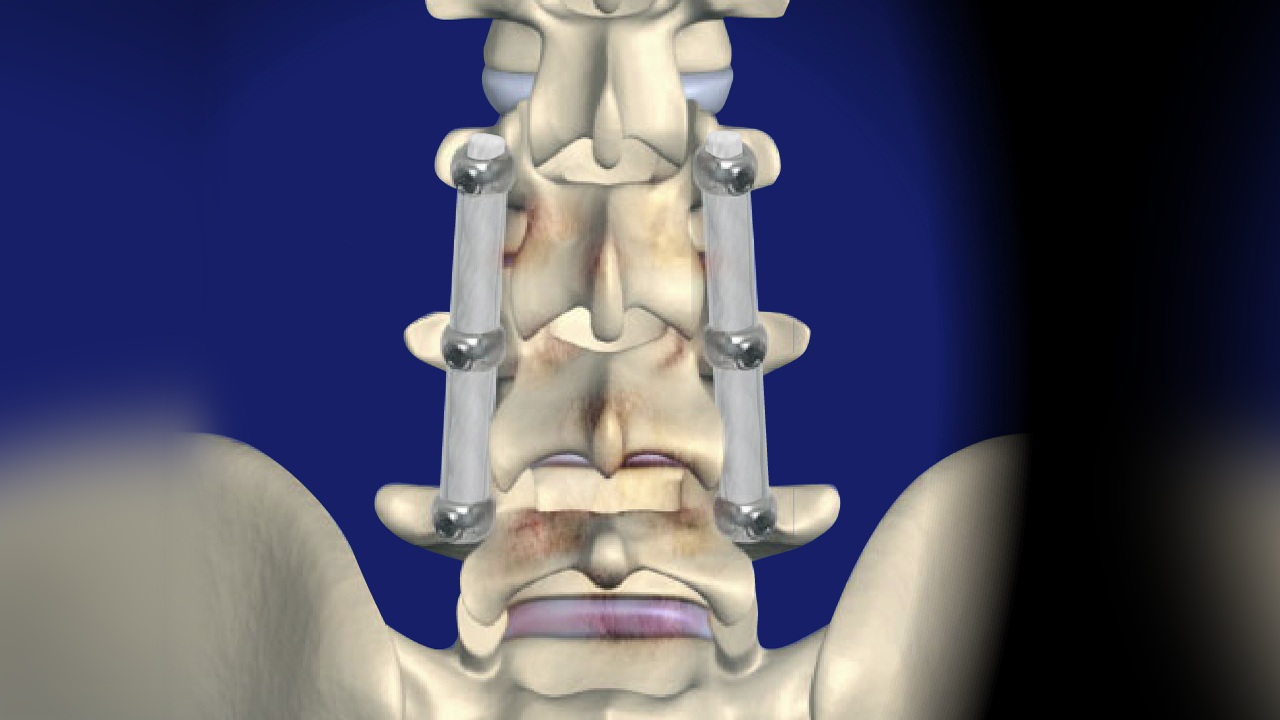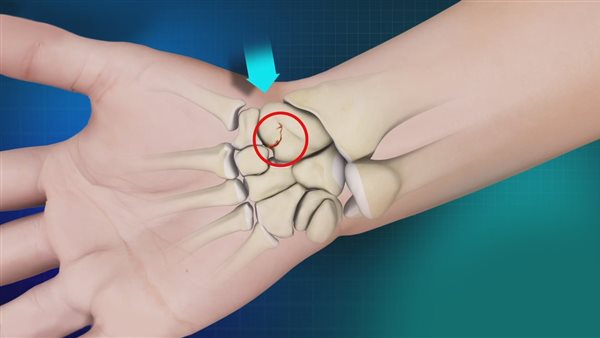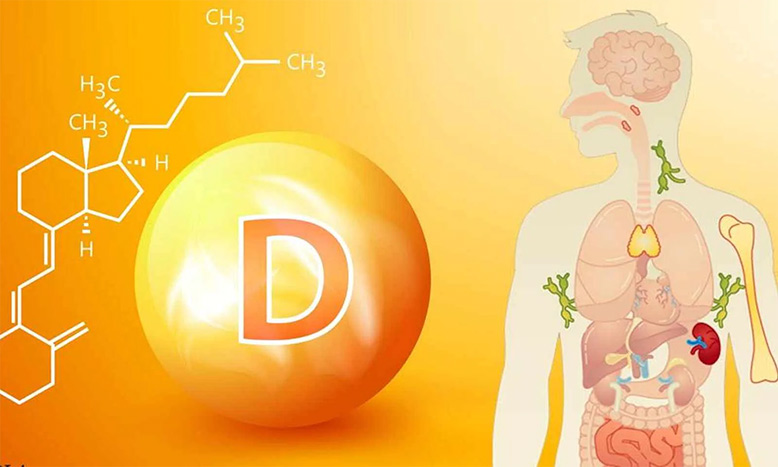How to get rid of joint inflammations? And what is the difference between arthritis and rheumatism?
How to Get Rid of Joint Inflammation?
Joint inflammation is a painful and bothersome health condition that many people around the world suffer from. However, there are several natural ways to help alleviate the symptoms of joint inflammation and improve the quality of life. Here are some tips and guidelines for getting rid of joint inflammation:
- Exercise: Doctors recommend engaging in regular exercise as a natural way to manage joint inflammation. Physical activity helps strengthen the muscles around the joints and improve range of motion.
- Get Vitamin D: Vitamin D is essential for bone and joint health. You can obtain vitamin D from direct sunlight exposure or dietary sources such as fatty fish and vitamin-fortified milk.
- Get Vitamin C: Vitamin C contributes to strengthening the immune system and helps reduce joint inflammation. You can get vitamin C from fruits and vegetables like oranges and strawberries.
- Drink Green Tea: Green tea contains antioxidants that help reduce joint inflammation. It’s recommended to drink a cup or two of green tea daily.
- Lose Excess Weight: Excess weight puts extra pressure on the joints and increases the likelihood of joint inflammation. Losing excess weight can help alleviate symptoms and improve overall health.
- Use Warm and Cold Compresses: Warm compresses can be used to relieve pain and improve blood circulation, while cold compresses can help reduce redness and swelling.
- Massage: Massage therapy can be beneficial for certain types of joint inflammation. Aromatherapy oils and massage techniques can be used to reduce pain and improve overall well-being.
In addition to these tips, consulting a specialized doctor for additional guidance and medical advice is advisable. It’s important to note that joint inflammation can be a chronic condition requiring ongoing medical care.
What is the Difference Between Joint Inflammation and Rheumatism?
Joint inflammation and rheumatism are related but distinct conditions:
- Joint Inflammation: Joint inflammation, also known as arthritis, refers to the inflammation of one or more joints in the body. It can result from various causes, including autoimmune disorders, infections, injuries, or wear and tear over time. Joint inflammation is characterized by symptoms such as pain, swelling, stiffness, and reduced range of motion in the affected joint(s).
- Rheumatism: Rheumatism is a broader term that encompasses a range of musculoskeletal conditions and symptoms, including joint pain and inflammation. It is often used to describe generalized discomfort or pain in the muscles, bones, or joints. Rheumatism can be caused by various factors, including arthritis, autoimmune diseases, or soft tissue disorders.
In summary, joint inflammation is a specific condition involving the inflammation of one or more joints, while rheumatism is a more general term used to describe musculoskeletal pain and discomfort, which may or may not be related to joint inflammation. The specific diagnosis and treatment for these conditions would depend on the underlying causes and symptoms. Consulting a healthcare professional is essential for proper evaluation and management.
What Are the Symptoms of Arthritis?
Arthritis is a medical condition characterized by swelling and pain in the joints, and it is one of the common diseases that affect many people worldwide. Arthritis can affect any joint in the body, including small joints in the fingers and large joints in the knees and hips.
The symptoms of arthritis can vary from one case to another and from person to person, but there are some common symptoms that may be shared among patients. One of the main symptoms of arthritis is joint pain and stiffness, and this pain worsens with age. The pain can be continuous or intermittent, and it can affect one part of the body or multiple parts.
In addition to pain, arthritis may be accompanied by other symptoms such as redness and swelling of the affected joint. The patient may feel an increase in body temperature and a weakness in the ability to move the affected joint. The patient may also notice joint stiffness, where it is difficult to move the joint, and it takes time to alleviate the stiffness.
Relatively mild symptoms are also part of arthritis symptoms, including pain when using the joint, which may improve with rest. The pain may worsen at night for some patients and in the later stages of the disease. The patient may notice swelling in the joint and around it, especially after excessive joint movement.
Acute bouts of severe pain are also symptoms of arthritis and may occur after long periods of stability. The severity of the pain may increase when climbing or descending stairs, sitting on the knee, or walking long distances.
Patients with rheumatoid arthritis should consult a doctor for a precise diagnosis and appropriate treatment. The treatment of arthritis depends on the severity and type of the condition and may include anti-inflammatory medications, pain relievers, physical therapy, and suitable exercises.
In conclusion, individuals experiencing symptoms of arthritis should pay attention to their health and seek appropriate medical care. Patients should consult a doctor and follow medical instructions to alleviate symptoms and improve their quality of life.
What Is the Difference Between Arthritis and Rheumatism?
Arthritis and rheumatism are two different medical conditions that affect the joints and surrounding tissues. The term “rheumatism” generally refers to problems that may affect the joints, ligaments, tendons, muscles, and bones. In contrast, arthritis is limited to diseases that affect the joints only.
Arthritis encompasses painful and chronic diseases that affect the joints, causing pain, swelling, and impairing joint movement and function. Arthritis can have various causes, including rheumatoid arthritis, gouty arthritis, ankylosing spondylitis, reactive arthritis, and others.
Rheumatism is a broader term used to describe musculoskeletal problems, including joint pain, that may or may not involve inflammation. It is often used to describe generalized discomfort or pain in the muscles, bones, or joints. Rheumatism can be caused by various factors, including arthritis, autoimmune diseases, soft tissue disorders, and more.
In summary, arthritis is a specific condition that primarily involves inflammation of one or more joints, whereas rheumatism is a more general term that encompasses various musculoskeletal problems and may include joint pain but is not limited to joint-related issues. The specific diagnosis and treatment for these conditions would depend on the underlying causes and symptoms, requiring consultation with a healthcare professional for proper evaluation and management.
As for rheumatism, it refers to a wide range of conditions that affect the joints and the surrounding tissues. Rheumatism can include diseases such as rheumatoid arthritis, psoriatic arthritis, reactive arthritis, gouty arthritis, ankylosing spondylitis, and arthritis resulting from injury or excessive stress.
The symptoms of arthritis and rheumatism are quite similar, as there can be pain, inflammation, and swelling in the joints for more than 6 weeks, especially in the finger and wrist joints. However, in severe cases of rheumatoid arthritis, inflammation can affect areas other than the joints.
Rheumatoid arthritis can damage a wide range of body systems, making it a chronic inflammatory disease. While rheumatism is not a medical term but rather a term used by people to describe symptoms similar to those of arthritis.
Some of the main symptoms of arthritis include severe joint pain, while the symptoms of rheumatism include flu-like symptoms such as fever, fatigue, night sweats, and loss of appetite.
Although both conditions affect the joints and can result in signs of swelling and redness, there are differences between them. Rheumatoid arthritis is considered a chronic disease that can affect areas other than the joints, while the fever associated with rheumatism is temporary and disappears within a few weeks.
In general, individuals experiencing prolonged joint pain and swelling should consult a doctor for an accurate diagnosis and determine whether they have arthritis or rheumatism. The appropriate treatment depends on the type and severity of the disease and may include anti-inflammatory medications, physical therapy, suitable exercises, proper nutrition, and adequate rest.
Therefore, awareness of the differences between arthritis and rheumatism is important for recognizing symptoms and providing the appropriate healthcare and improving the quality of life for patients.
When Is Arthritis Serious?
When it comes to arthritis, the severity can vary based on the individual’s specific condition and disease progression. In many cases, arthritis can be a chronic and painful condition, but it may not necessarily be considered serious. However, there are several factors to consider in determining when arthritis may be serious. Here are some points to keep in mind:
Decline in Overall Health: If a person’s condition with arthritis significantly deteriorates, with increased pain and limited mobility, this may be an indication of the seriousness of the disease. It could suggest the progression of arthritis and greater joint damage.
Inflammation of Internal Organs: In rare cases, arthritis can affect internal organs such as the heart, lungs, and kidneys. If there are symptoms like shortness of breath, chest pain, or difficulty urinating, it is essential to consult a doctor immediately.
Scarring and Fibrosis: Rheumatoid arthritis can lead to fibrosis and scarring in lung tissues, causing a gradual reduction in lung function and breathing difficulties. If there are symptoms like shortness of breath, persistent coughing, or extreme fatigue, consulting a doctor to assess the condition is crucial.
Increased Risk of Lymphoma: Rheumatoid arthritis is considered a risk factor for lymphoma, a series of cancers that affect the lymphatic system. If there are symptoms such as swollen lymph nodes, it may be an indicator of the seriousness of arthritis.
Impact on Daily Life: If arthritis significantly affects a person’s ability to perform basic daily activities like walking, lying down, or doing household chores, it may be a sign of the seriousness of the disease.
In summary, when it comes to arthritis, the seriousness can vary, and it depends on factors like disease progression, overall health, and the presence of complications affecting internal organs or the ability to carry out daily activities. It’s important for individuals with prolonged joint pain and swelling to consult a healthcare professional for an accurate diagnosis and appropriate management.
It is essential for arthritis to be evaluated by a specialist doctor who can determine when arthritis is serious and provide appropriate treatment. It is also important to adhere to the prescribed treatment and follow a healthy lifestyle to reduce the severity of the disease and improve the quality of life.
How long does arthritis last?
Arthritis is a condition in which a person experiences swelling and pain in one or more joints in the body. Arthritis is one of the common diseases that affect many people around the world. The duration of arthritis varies from person to person depending on different factors.
The duration of arthritis is an important factor in diagnosing the disease. Typically, patients experience arthritis symptoms for more than 6 weeks. This duration is a strong indicator of chronic arthritis.
Arthritis symptoms vary from person to person and include pain, swelling, and stiffness in the affected joints. Pain and stiffness can increase with age. In some cases, stiffness may last for more than 60 minutes after waking up or after long periods of inactivity.
A person’s condition should be checked to ensure that arthritis is the underlying cause of common symptoms. Juvenile idiopathic arthritis is diagnosed when the disease begins before the age of 16 and the symptoms persist for more than 6 weeks, excluding all other diseases that may cause arthritis.
Engaging in appropriate physical exercises is an important factor in controlling arthritis and alleviating accompanying symptoms. It is important to exercise at a comfortable pace so that a person can continue to speak comfortably without difficulty in breathing during exercise. Wearing appropriate shoes is also important to avoid any injuries or additional stress on the joints.
There are several ways to treat arthritis, including the use of anti-inflammatory and pain-relieving medications to alleviate pain and swelling. Physical therapy and therapeutic exercises can also be used to improve joint mobility and reduce symptoms.
Some people use acupuncture treatment at specific points on the skin to relieve pain, including pain caused by some types of arthritis. This treatment is effective in many cases and helps improve the quality of life for patients.
In conclusion, patients should continue to engage in appropriate physical activities and follow a healthy lifestyle to control arthritis and alleviate symptoms. It is important to consult a specialist doctor for an accurate diagnosis and a suitable treatment plan for their condition.
What vitamin is responsible for joint pain?
The vitamin responsible for joint pain is vitamin D. Vitamin D is considered one of the essential vitamins for bone and joint health. This vitamin works to promote bone health, strength, and protection from pain and inflammation.
Symptoms of vitamin D deficiency include fatigue, muscle weakness, and joint pain. The risk of joint pain increases when the level of vitamin D in the body is low. Therefore, the body needs to consume vitamin D daily to maintain vitality and overall health.
Vitamin D contains a protein called osteocalcin, which helps in the production of healthy bone tissues in the body. Research has shown that sufficient levels of vitamin D positively affect bone and muscle function and may have anti-inflammatory effects.
A deficiency in vitamin D in the body is associated with an increased risk of problems such as osteoporosis due to reduced bone mineral density. Vitamin D plays a crucial role in calcium absorption, and many people believe it contributes to relieving joint pain, especially when inflammation is the cause.
Therefore, it is recommended to take vitamin D supplements and minerals to compensate for any deficiency in the body. Cholecalciferol (Vitamin D3) is considered one of the most effective, safe, and easily absorbed forms of vitamin D. These forms are metabolized in the liver and kidneys to transform into the active form, which is vitamin D or calcitriol. This active form enhances the absorption of calcium and phosphorus from the intestines.
In summary, vitamin D is one of the essential nutrients needed by our bodies to build healthy bones and maintain them. It plays a vital role in maintaining joint health and reducing joint pain and is considered an important treatment for conditions associated with vitamin D deficiency. Therefore, it should be regularly consumed from natural sources such as egg yolks, milk, cheese, or through vitamin D supplements under the supervision of a doctor.
What is a healthy diet for arthritis?
Arthritis is a common condition that affects many people worldwide. One of the key ways to manage this condition is through a healthy and balanced diet. Would you like to know what constitutes a healthy diet for arthritis? Let’s explore a range of foods that can help alleviate symptoms and promote joint health.
Fatty Fish: Fatty fish like tuna, salmon, and mackerel are beneficial foods for arthritis patients. They contain omega-3 fatty acids that help reduce inflammation and improve joint health. It is recommended to consume fatty fish twice a week to maximize their benefits.
Fruits and Vegetables: Fruits and vegetables are rich in vitamins, minerals, and plant compounds that help strengthen joints and reduce inflammation. Fresh fruits and vegetables should be consumed daily to ensure a balanced and healthy diet.
Olive Oil: Olive oil is a rich source of healthy fats and antioxidants. It contains compounds that help reduce inflammation and improve joint health. Adding olive oil to salads and various dishes is recommended to benefit from its health advantages.
Garlic and Onions: Garlic and onions contain compounds such as allicin and dimethyl sulfoxide (DMSO), which have anti-inflammatory properties. These compounds can help reduce pain and swelling associated with arthritis. Adding garlic and onions to different dishes can enhance joint health.
Nuts and Seeds: Nuts and seeds, such as walnuts, cashews, flaxseeds, hemp seeds, and chia seeds, are rich in essential fatty acids, vitamins, and minerals. It is advisable to consume nuts and seeds to promote joint health.
Ginger: Ginger is a natural spice that contains anti-inflammatory compounds. Consuming ginger can help reduce pain and swelling associated with arthritis. Ground ginger can be added to tea or various dishes to benefit from its properties.
Green Tea: Green tea is a healthy beverage that contains antioxidants and anti-inflammatory compounds. Drinking green tea can help reduce inflammation and improve joint health.
In conclusion, a healthy diet for arthritis includes a variety of foods rich in nutrients that promote joint health and reduce inflammation. Incorporating these foods into your daily meals can help manage arthritis symptoms and improve overall well-being.
Nutrition and healthy eating should be an essential part of managing arthritis. It’s important to consult a doctor or a nutritionist for personalized advice and recommendations that suit each individual’s condition. Remember that the foods mentioned above may help alleviate symptoms and promote joint health, but they are not considered a substitute for medical treatment prescribed by a healthcare provider.
What fruits are beneficial for arthritis?
Arthritis is a health condition that causes swelling and pain in the joints. Arthritis can affect mobility and the ability to carry out daily activities normally. Proper nutrition is known to play a significant role in reducing arthritis symptoms and improving the quality of life for those who suffer from it.
There are many fruits that are considered beneficial for arthritis and can help alleviate its accompanying symptoms. Let’s highlight some of these fruits and their benefits:
- Apples: Apples are not only delicious but also packed with health benefits. They contain a substance called quercetin, a flavonoid known for its anti-inflammatory effects.
- Cherries: Cherries are rich in antioxidants, vitamins, and minerals that help reduce swelling and relieve pain associated with arthritis.
- Pineapple: Pineapple contains bromelain enzyme, which has been shown to reduce pain and swelling in rheumatoid arthritis.
- Wild Blueberries: Wild blueberries contain compounds that help reduce swelling and improve joint mobility.
- Oranges: Oranges are rich in vitamin C, which boosts the immune system and helps reduce swelling and pain.
In addition to the fruits mentioned above, there are other ingredients that can be beneficial for arthritis. For example, turmeric, ginger, cilantro, onions, dill, lemon, blackberries, strawberries, and cranberries all contain natural components that help alleviate arthritis inflammation.
It’s worth noting that some fruits may be common triggers for joint pain in some individuals. According to the Arthritis Foundation, these fruits include citrus fruits, apples, and bananas. However, the impact of fruits on arthritis pain can vary from person to person based on individual tolerance and physiological reactions.
In general, consuming antioxidant-rich fruits like apples, pomegranates, blueberries, cranberries, strawberries, and wild blueberries is recommended to alleviate arthritis symptoms. Additionally, incorporating beneficial oils such as olive oil and fish oil, which contain omega-3 fatty acids that help reduce swelling and pain, can be beneficial.
Based on research and recent studies, it can be said that fruits play a crucial role in alleviating arthritis symptoms and improving the quality of life for those who suffer from it. However, individuals with arthritis should consult a specialist doctor for personalized advice and dietary recommendations.
What is the cause of sudden arthritis?
Sudden arthritis, also known as reactive arthritis, is a condition that causes a lot of pain and fatigue for those affected. It is also known as reactive arthritis and occurs as a result of a person’s body being infected, typically with an infection in the intestines, genitals, or urinary tract. The person may not be aware of the infection that caused it, especially if it resulted in mild or no symptoms at all. Various infections can cause different types of reactive arthritis as multiple types of bacteria can cause reactive arthritis.
The most common bacterial infections that cause reactive arthritis, also known as sudden arthritis, include infections with Escherichia coli, Salmonella, Chlamydia, Yersinia, and Clostridium. Many of these bacteria can be transmitted through contaminated foods, contaminated water, or direct contact with infected individuals.
Reactive arthritis occurs when the body’s immune system mistakenly attacks both the infection-causing bacteria present in the body and the joints. This erroneous attack leads to inflammation in the joints, causing pain, swelling, and stiffness.
Reactive arthritis is a relatively rare condition and often affects individuals between the ages of 20 and 40. It may develop weeks or months after the infection, and it can impact large joints like the knee, ankle, and joints in the feet. Reactive arthritis can appear suddenly without prior warning and may persist for a short or long duration depending on the severity of the infection and the body’s response to it.
To treat reactive arthritis, doctors typically use antibiotics to target the underlying infection and prescribe pain relievers to alleviate pain and swelling. Some individuals may require rest, massage, and physical therapy exercises to improve their condition. In severe cases, surgical intervention may be necessary to repair the affected joint.
In general, reactive arthritis is a serious health issue, and individuals suspected of having this condition should consult a specialist doctor for an accurate diagnosis and appropriate treatment. It is also recommended to avoid exposure to infections and follow good personal hygiene practices to prevent this painful and bothersome condition.
Does arthritis cause weight loss?
Arthritis is a common health condition that causes inflammation of the joints and affects joint mobility and normal function. Arthritis can occur in any joint in the body and can result from various factors such as aging, genetics, injury, and autoimmune system-related inflammation.
In recent years, studies have shown that arthritis can lead to weight loss. Researchers believe that an increase in body weight can increase the likelihood of developing rheumatoid arthritis in women. Rheumatoid arthritis is a chronic condition that causes tissue inflammation and affects a person’s metabolic processes, significantly reducing weight. Additionally, arthritis can cause joint pain and swelling, making movement difficult and sometimes leading to joint stiffness.
Although weight loss may result from arthritis, it can also occur due to depression. Sudden, unexplained weight loss may indicate another health problem, and it is essential to consult a doctor to determine the exact cause.
According to studies, adults with rheumatoid arthritis can improve their health by losing 5% of their body weight. They may have a higher ratio of fat to muscle mass compared to healthy individuals, and therefore, weight loss can reduce symptoms and improve joint mobility and function.
There is no magic cure for arthritis, but several methods can help manage the condition and reduce symptoms. Among these methods, patients are advised to engage in regular low-impact exercises such as slow walking or brisk walking, which can help strengthen muscles and improve joint flexibility.
In conclusion, arthritis can cause weight loss, but not always. It depends on several factors, including the type and severity of arthritis and other related health factors. It is crucial to effectively manage arthritis by maintaining a healthy weight, engaging in appropriate exercise, and seeking regular medical consultation.
The best joint doctor in Egypt
Dr. Amr Amal is considered one of the best joint surgeons in Egypt. He stands out for his extensive experience and deep knowledge in this field. He graduated with honors from the Department of Orthopedic Surgery at Ain Shams University’s Faculty of Medicine. He worked as a resident in Ain Shams University hospitals for three years and as an assistant lecturer in the same university for five years. He currently works as an associate professor of orthopedic surgery and joints at Ain Shams University.
Dr. Amr Amal is an expert in orthopedic surgery, joints, and injuries. He serves as a consultant in orthopedic and joint surgery at Ain Shams University and is also a faculty member at the same university. He completed his fellowship training at Aachen University in Switzerland.
In summary, Dr. Amr Amal is one of the top orthopedic and joint surgeons in Egypt, known for his extensive expertise and excellence in the field.
